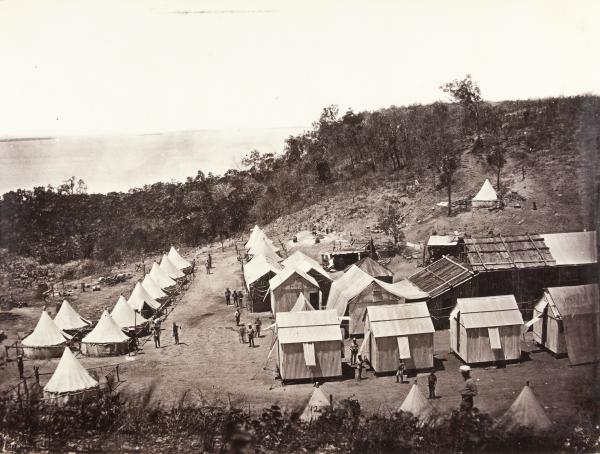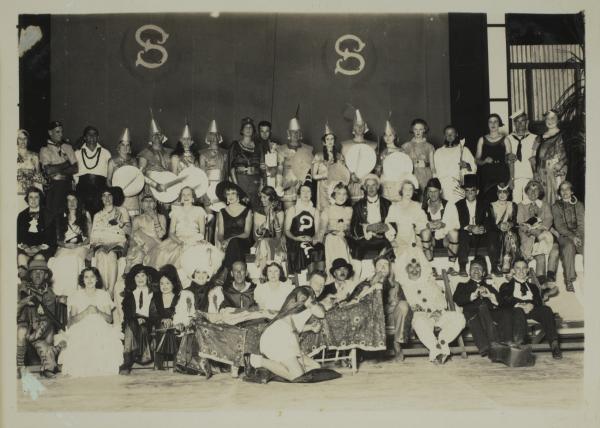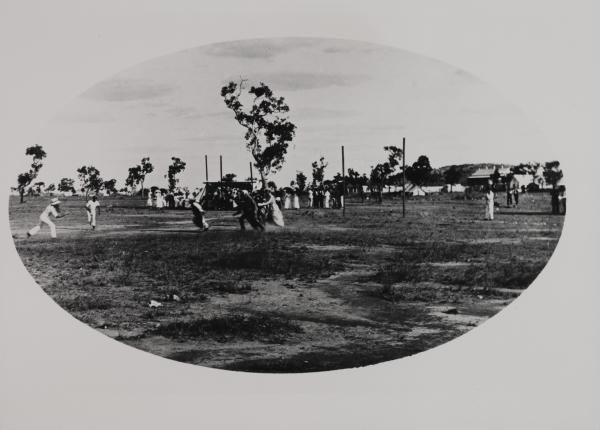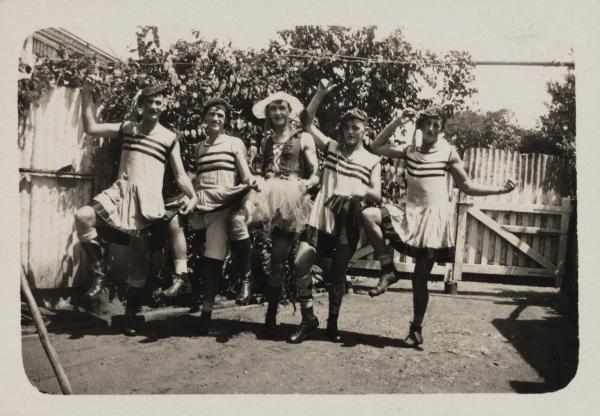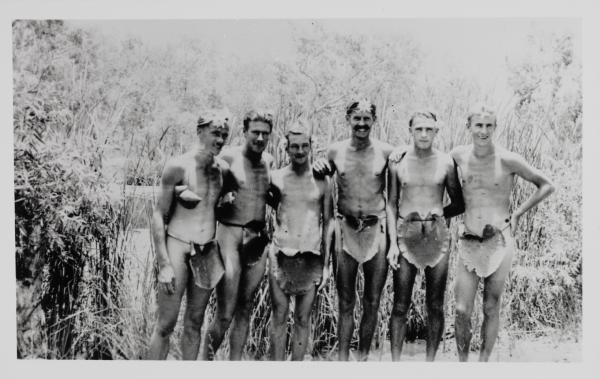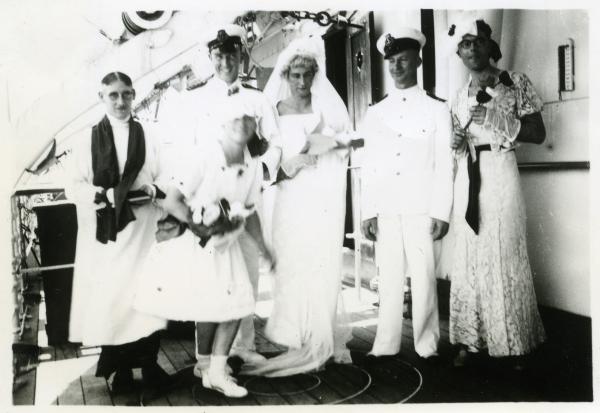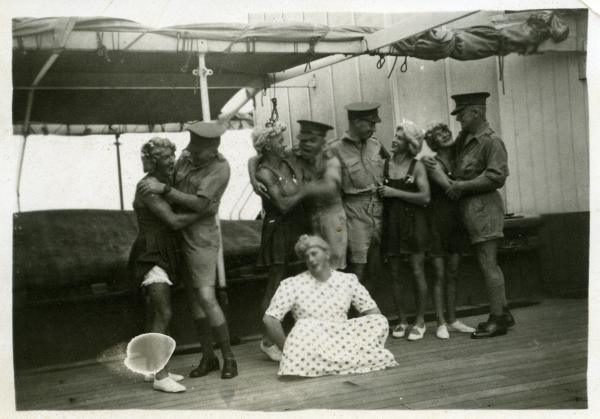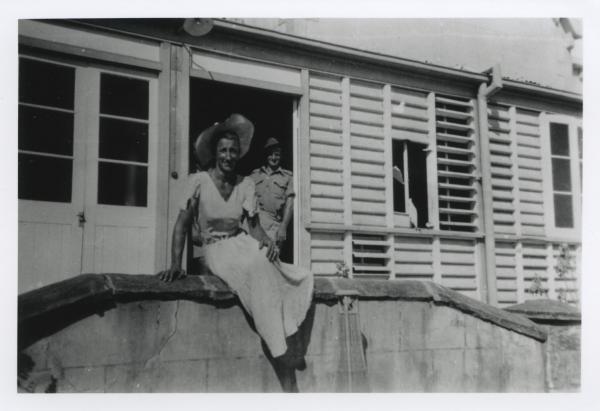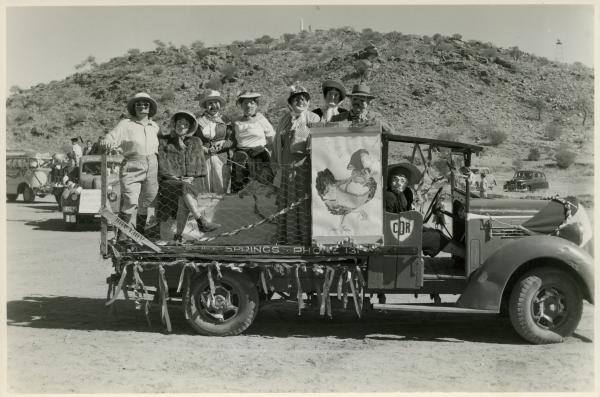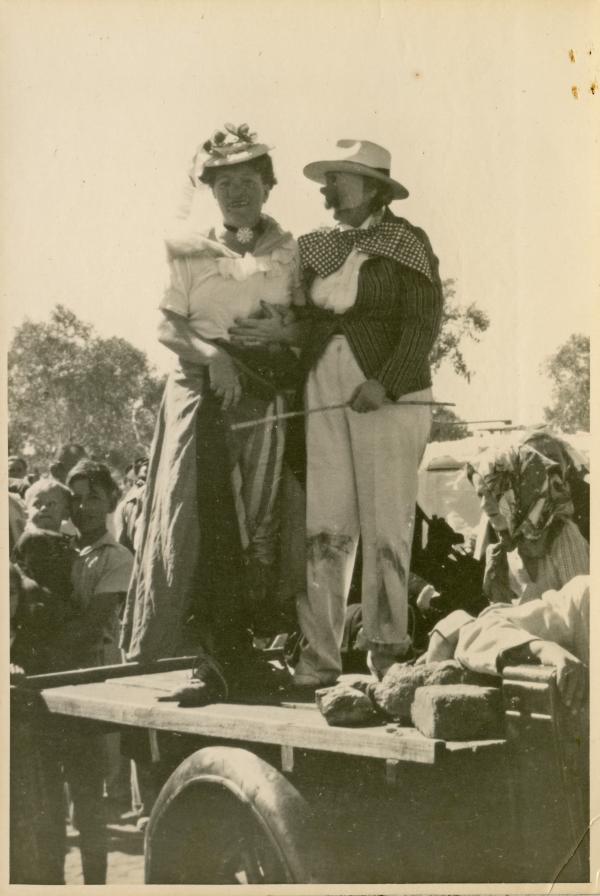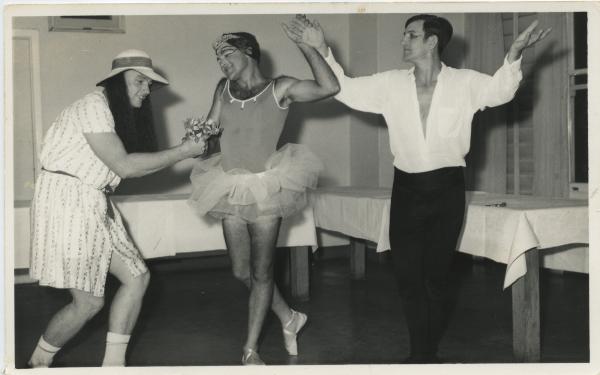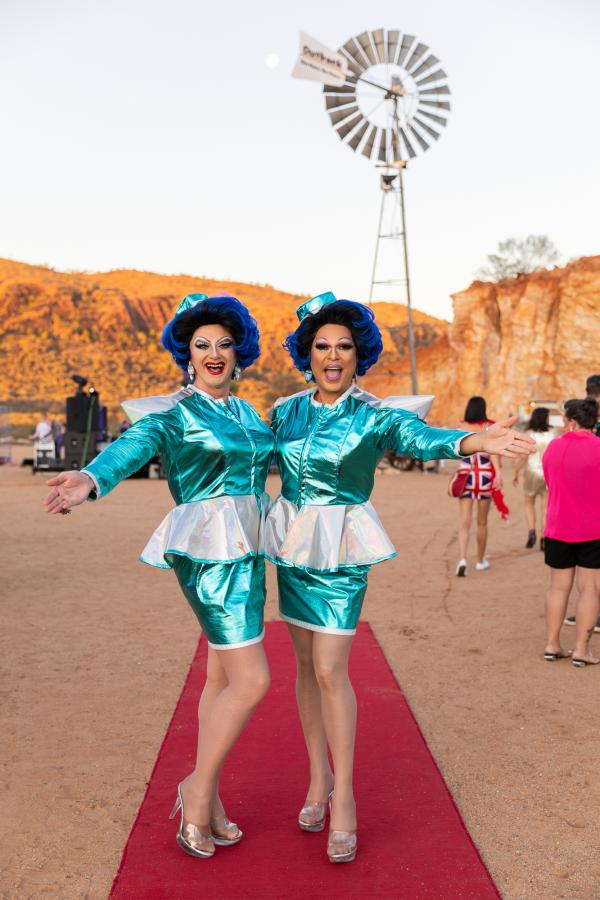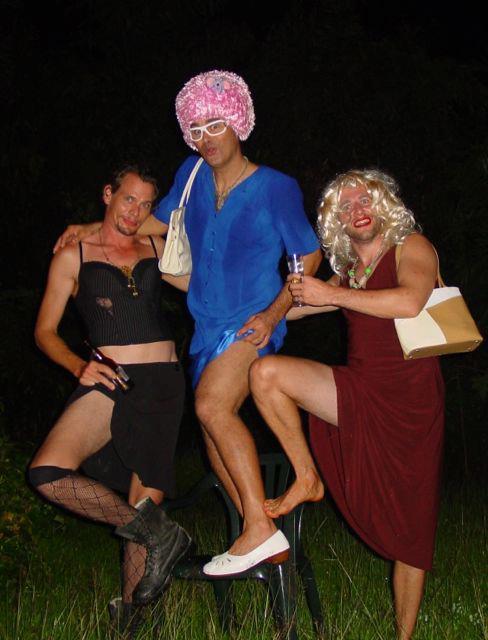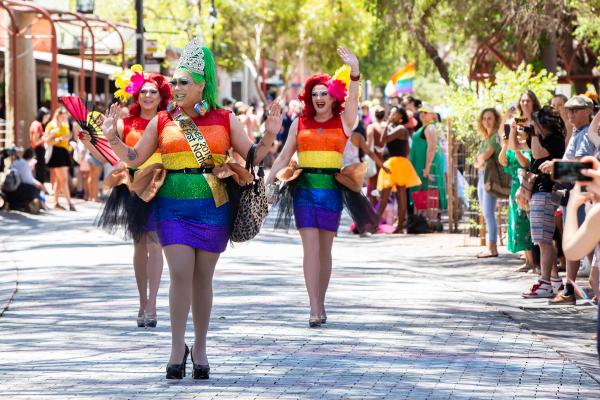Topsy Turvy: Cross-dressing in the Territory
Contrary to the rugged myth of the Territory frontier, since first settlement many European males in the outback and the north wore female clothing for fun and camaraderie. Railway workers, medics, sportsmen and Second World War servicemen all frocked up at times. This is a pictorial tour of Territory history as you’ve never seen it before.
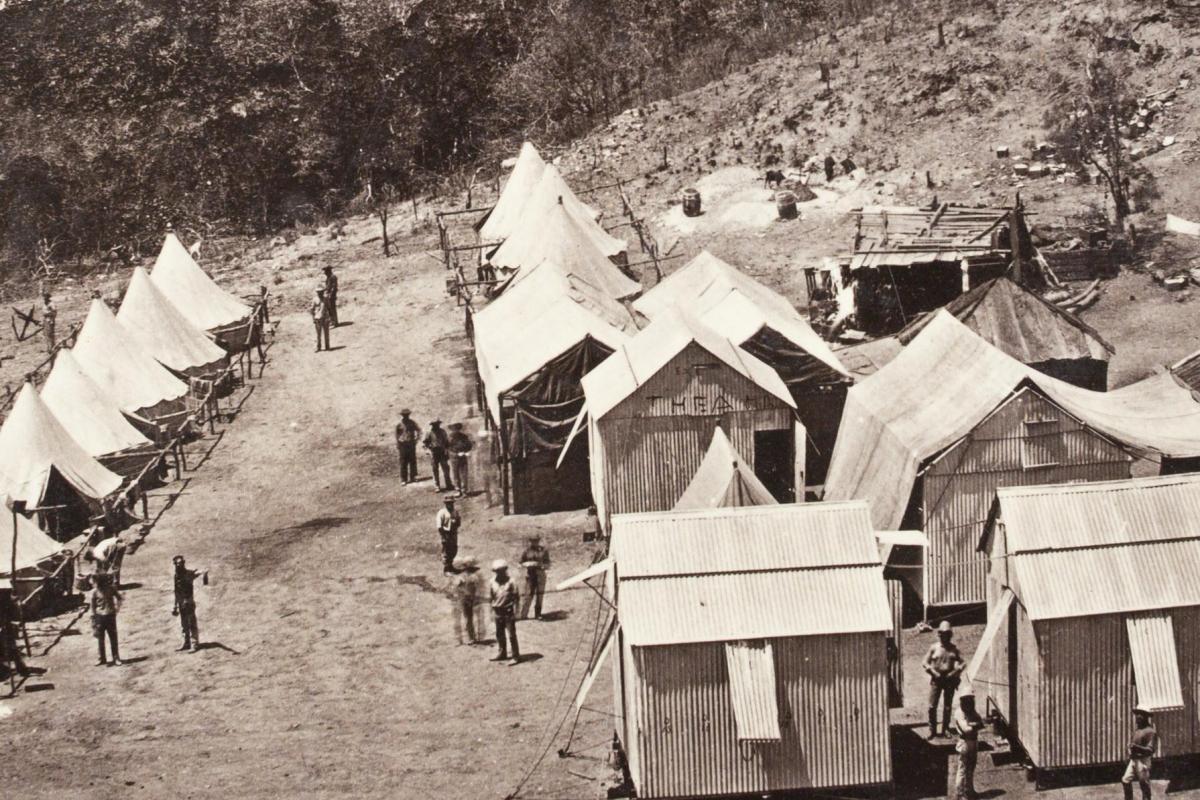
Beginnings
European cross-dressing has been a part of Territory culture since the arrival of the first settlers. At Port Essington in 1839, the British play Cheap Living was performed. According to explorer Captain John Lort Stokes, the garrisons' wives lent the men dresses, and:
“All the characters being supported by men, the female personages of the drama presented a most grotesque appearance; moreover the ‘act drop’ being an old ensign [flag], the ladies could be seen through it, regaling themselves during intervals with a pipe. The whole affair gave infinite satisfaction”.
During the establishment of a settlement at Palmerston (now Darwin) by Surveyor General GW Goyder in 1869, cross-dressing also featured in a performance of the 1847 farce Box & Cox.
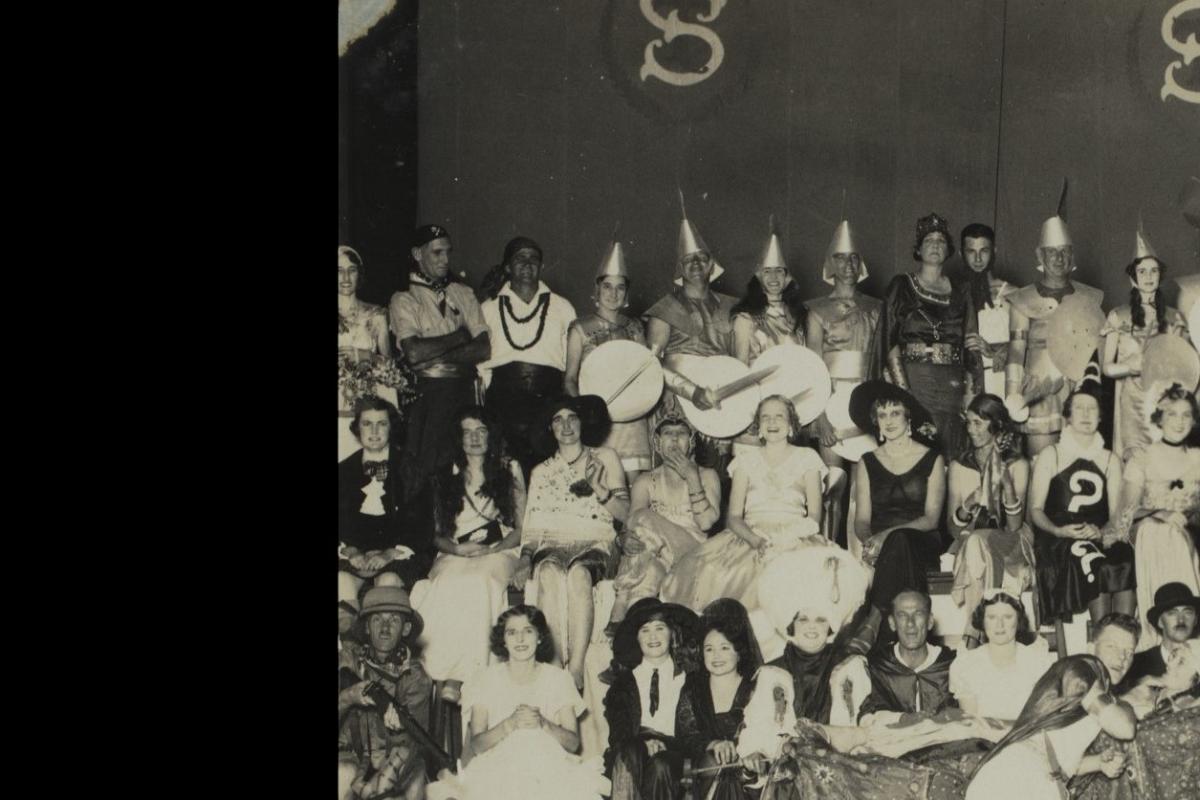
A Culture of Fancy Dress
During the early 1900s, fancy dress for young and old was a significant part of people’s entertainment. In Darwin between the wars, fancy dress balls were held at the Star Theatre, the Town Hall, the Parish Hall in Parap and the old hospital building in Doctor’s Gully. “Grand Gals” dances and fancy dress carnivals were also held with buses picking people up from around Darwin.
Cross-dressing was common at these events.
Costumes were highly ornate, finely crafted and plentiful. In Darwin, people bought costumes from local habadasheries or ordered them from suppliers in the southern cities.

The First Top End Footy Match
Fancy dress and 'opposite' sporting matches were frequently held between the First and Second World Wars. In an 'opposite' match, women wore the clothes of men, and men wore the clothes of women.
On the right is the first known image of an Australian Rules Football match in the Northern Territory. The players appear to be wearing flowing robes or dresses. 'Opposite' matches were often held to generate interest and establish a new sport.

Fancy Dress Cricket
At the dawn of the First World War in 1914, all stops were pulled out for a fancy dress cricket match in Darwin. Long before the selfie era, newspapers contained descriptions of the best costumes.
Dressed as Miss Rosie Ragtime, Mr A.T. Hutchinson must have been a sight to behold, wearing:
“Figured voile-de-soil tango skirt, slit to knee with scarlet tassels. Jacket made riding goat style, V-front, trimmed with electric blue silk frills. 'Undergear' latest in tango with Maltese lace. Crushed strawberry stockings and tango strappings, black satin court shoes, ‘undressed kid’ gloves. Tagel straw hat trimmed with ostrich plume and a pean de pêche ribbon sunshade.”
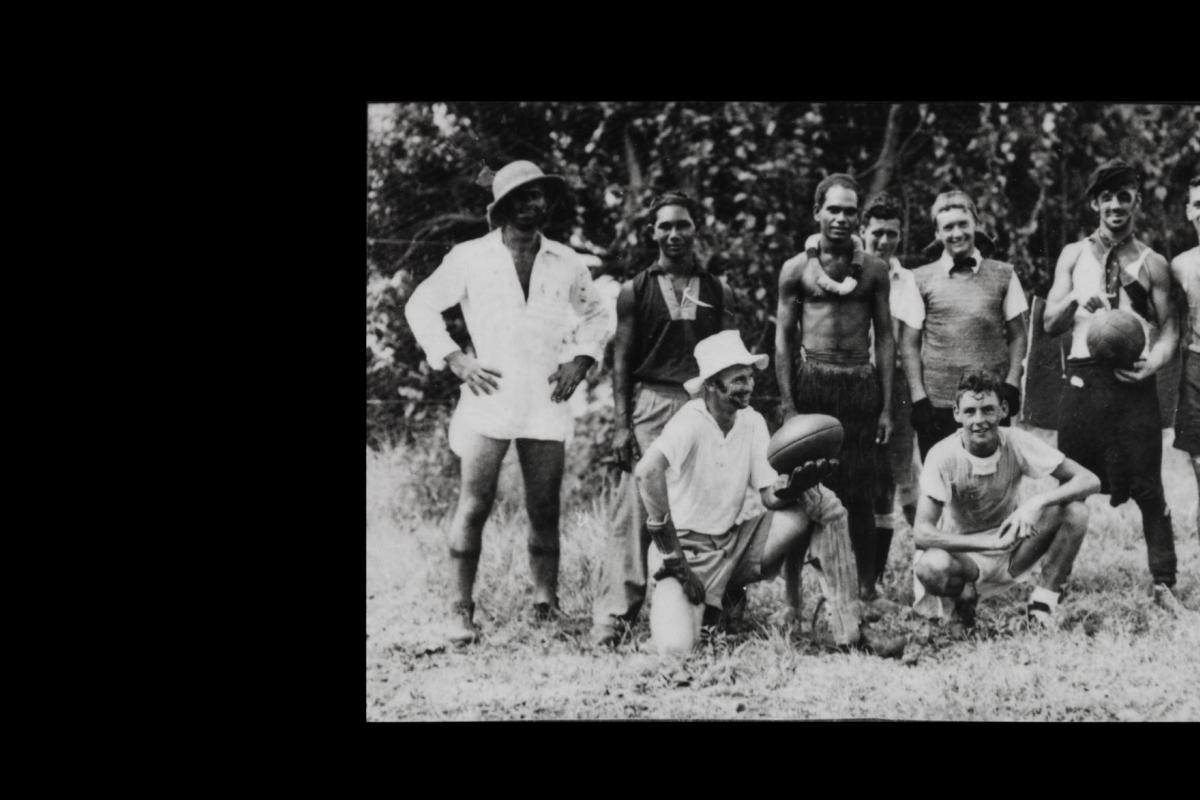
An 'Opposite' sporting match, anyone?
'Opposite' sporting matches sponsored by the British Australian Telegraph company were popular. In November 1931, the NT Times and Gazette explained:
“In reference to the Opposite Tennis Matches…, gentlemen are notified that they must wear ladies’ frocks that are at least ankle length; ladies must wear trousers.”
When it came to cricket, the same chronicler of local affairs was not impressed by the results:
“Truth compels us to state that while the ‘Gentlemen’ looked very manly in their white cricketing suits, the ‘Ladies’, whose top hamper was elegant enough, were sadly wanting about the pedal extremities. Several of them showed decidedly knobbly knees, two were as flat-footed as a Burdekin Duck, one was bandy-legged and one was very plainly knock-kneed. Those trousers hide a lot of faults that are only too visible when the costumes are changed.”
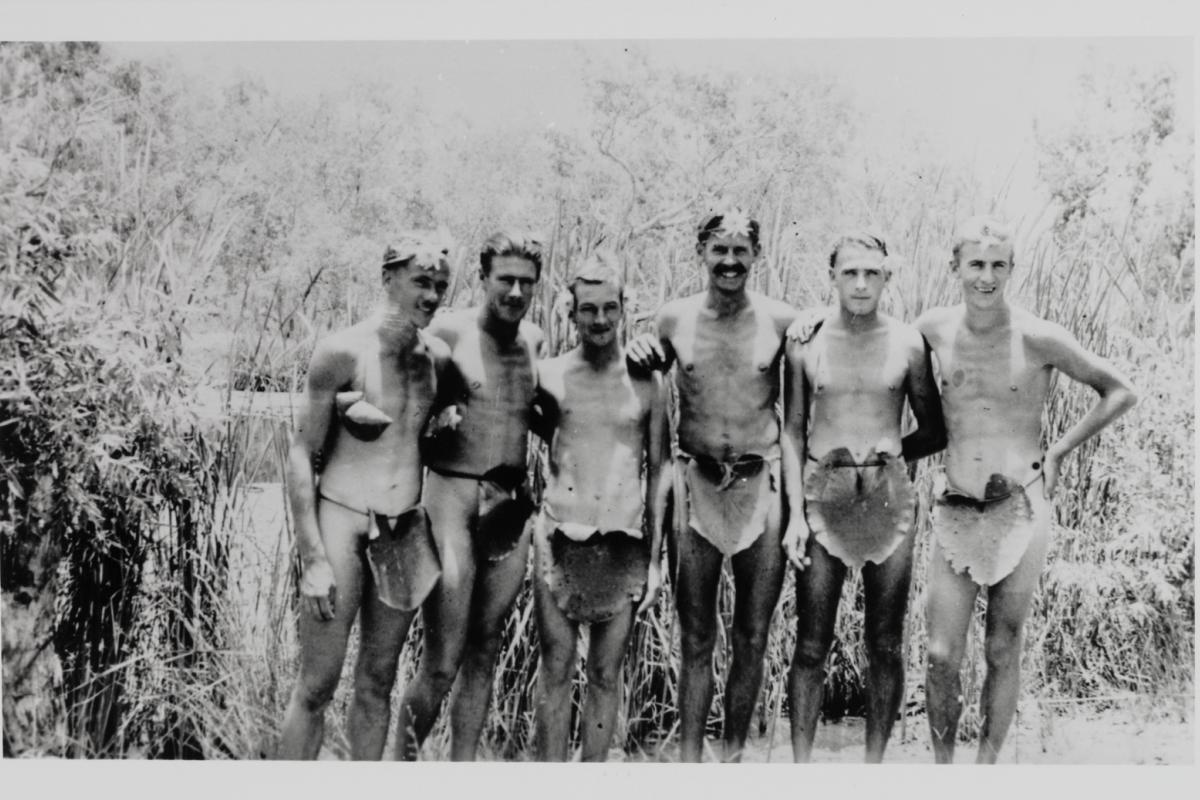
Second World War
During the war, large numbers of servicemen were stationed in the Territory. With plenty of downtime, troops were entertained through competitions, movie screenings, theatrical performances and fancy dress football matches. Cross-dressing was a popular element of military entertainment. Fancy dress parades had been held on ANZAC Day for many years, and official on-base theatrical productions included frocked-up servicemen.
At the 38 Radar station on Bathurst Island, isolated Australian and American soldiers entertained themselves by creating a chorus line for their Christmas party in 1943:
“We blackmailed a few of the younger fellas…and conscripted them as chorus girls. First we borrowed the Medical Orderly’s gentian violet for lipstick and ordered close shaves. Costumes were next. Two large hankies were used for the bikinis and two for bras. To disguise the flat chests, we used small tins stuffed in the hankies on the chest—not bad in the dark.”

HMAHS Manunda
After touring the Middle East, the hospital ship HMAHS Manunda was tragically bombed in Darwin Harbour by the Japanese on
19 February 1942, with the loss of twelve lives. Dozens more
were injured.
The Manunda had been docked in Darwin for five weeks
prior to the chaos and destruction of the Japanese attack.
Many female nurses joined the ship and it appears a number of elaborate fancy dress gatherings and performances were held on board even before the Manunda’s First Anniversary Ball on 7 August 1941. For this, Lieutenant George Rayner was busy for days on a sewing machine making costumes. The results of the crew’s combined efforts were highly impressive.
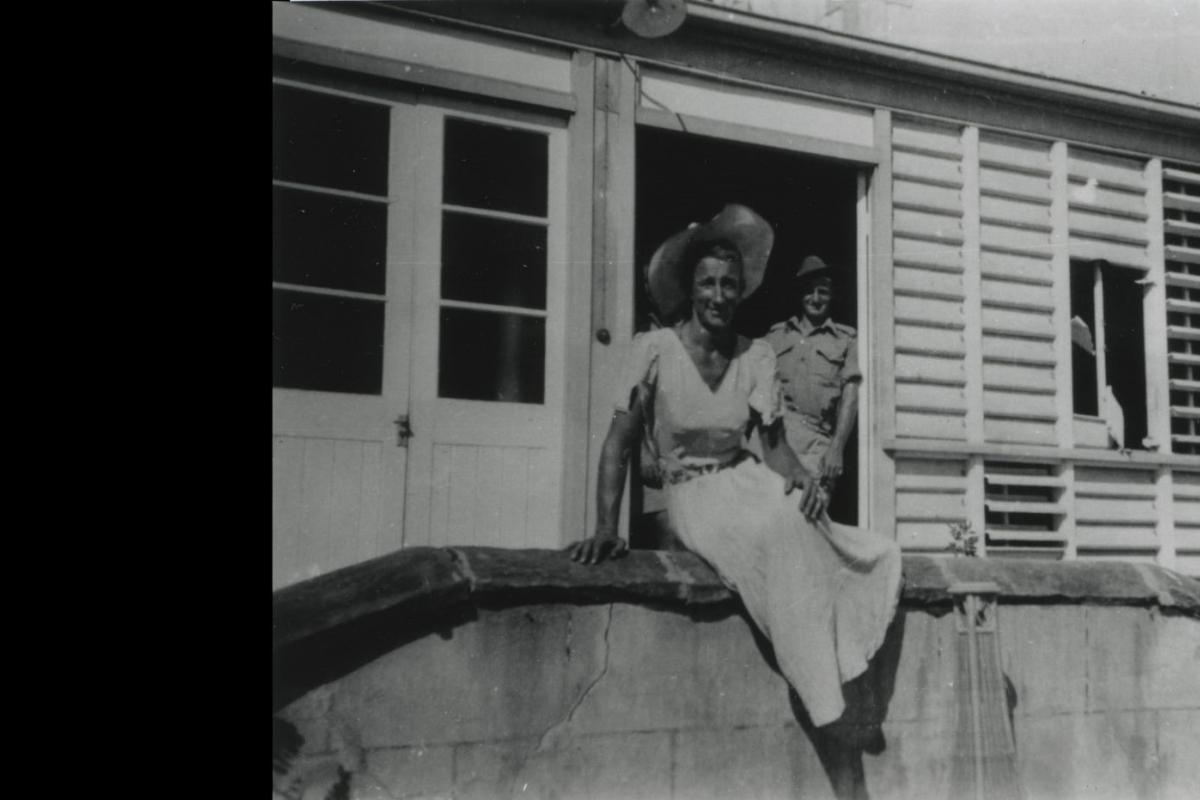
Ransacking the Vice-Regal Wardrobe
After the bombing of Darwin, the town descended into chaos. Confusion reigned about who was in charge, and widespread looting occurred. Government House was not spared. On the Sunday after the bombing, a number of Americans were seen leaving the official residence, laden with clothing and other goods.
Whether the man pictured here in one of Mrs Abbott’s dresses realised it or not, he was emulating a strong cultural tradition. Although his display may have been seen as invasive, for centuries in Europe:
“[It was] the custom during Carnival that the ruling class would be playfully mocked using masks and disguises.”
While social conventions were in jeopardy after the bombing, the temptation to cross-dress was also possibly heightened. A culture of chaos emerged.
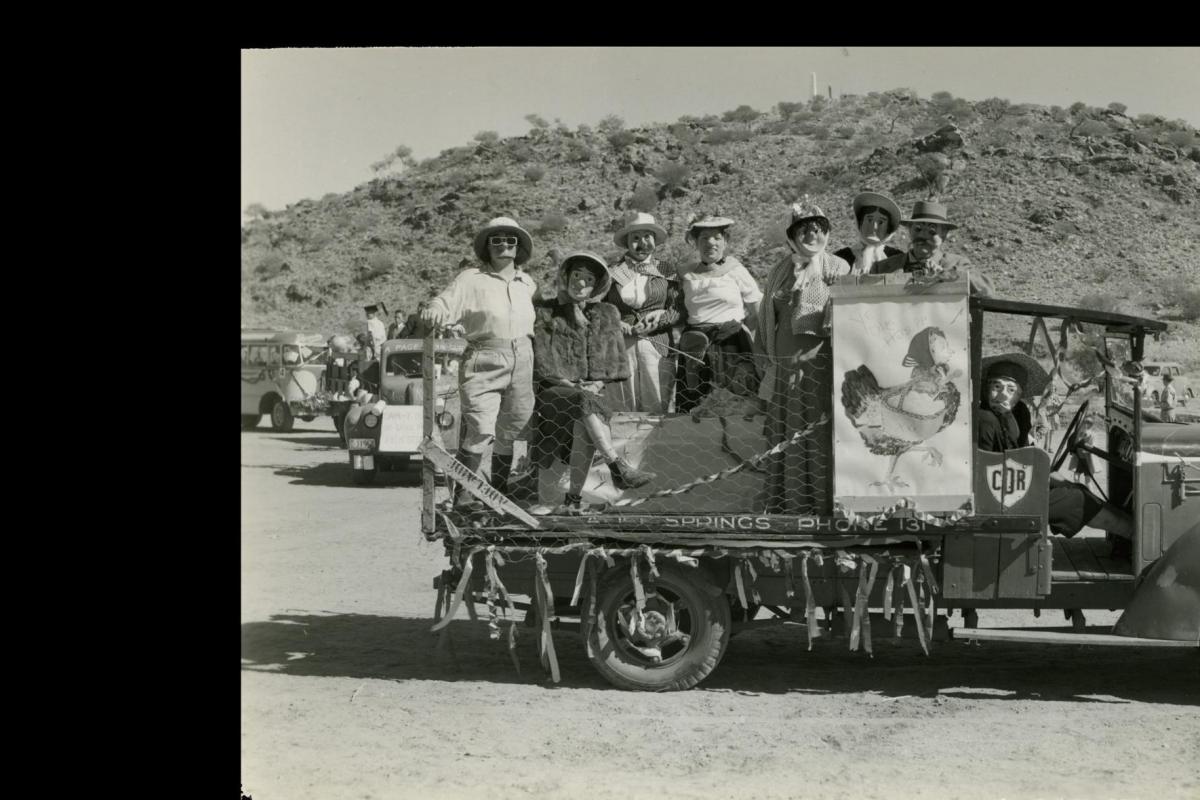
Drag in the Desert
After the Second World War, Alice Springs street parades were a major annual focus. The costumery of the Federation Jubilee parade in 1951 was particularly splendid. The Country Women’s Association joined the fun. After each parade, the town’s Progress Association held a Fancy Dress Ball.
Down the line in Southern Arrernte country, a cross-dressing party in the late 1950s at Finke (now Aputula) got out of hand. In her memoir Craft for a Dry Lake, writer and artist Kim Mahood remembers the party her parents attended:
“A band of fettlers from down the line got drunk at the pub and crashed the party, picking a fight with the first man they encountered. He shrieked and bolted and the scary, hairy-armed women of Finke removed their high-heeled shoes and waded into the fray. It took a while for the rumour of a band of Simpson Desert Amazons to die down…"
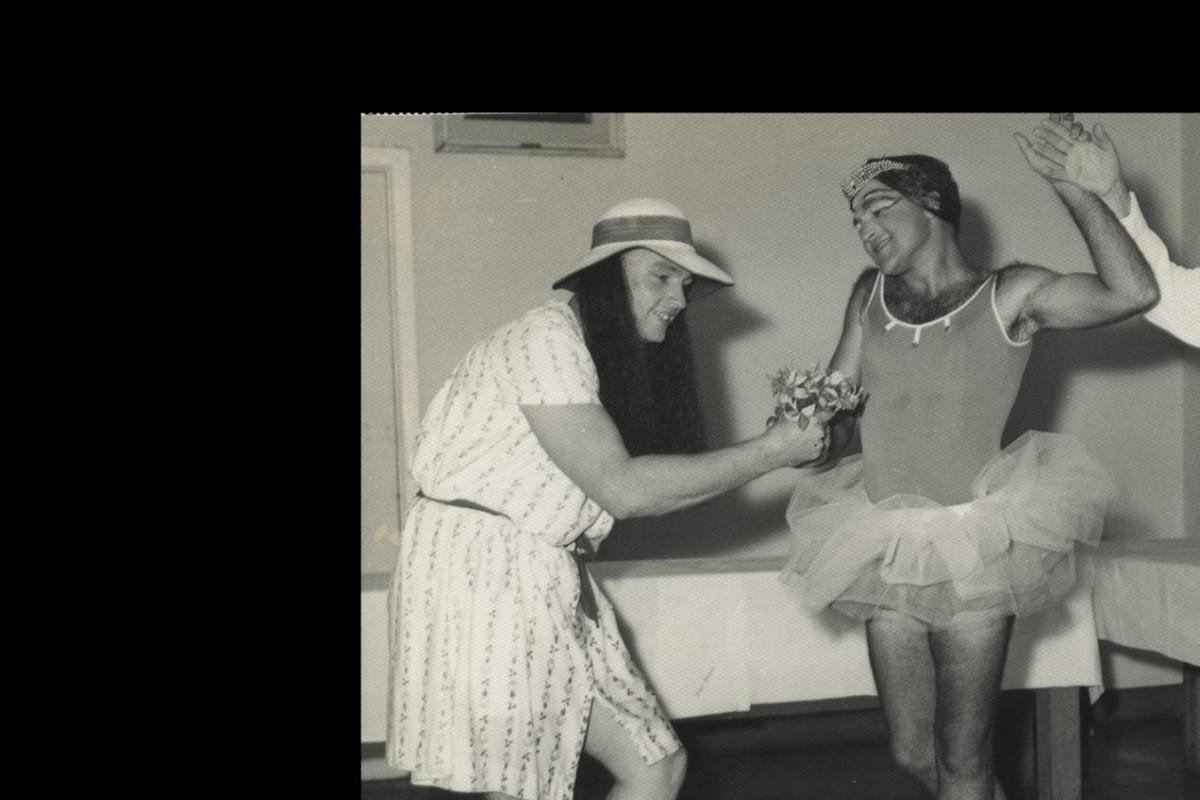
The Swinging Sixties
The township of Batchelor celebrated the dawn of a new decade with a 'Miss Batchelor' contest. On 8 January 1960, under the headline 'Bathing Beauties', the NT News described:
“It was a bathing beauty parade with a difference… the contestants were just a little hefty and their vital statistics would never have earned them a film contract….The entrants won all hearts, but the red-haired, buxom Miss Dinah Might was chosen ‘Miss Batchelor’ and decorated with a sash by [mine] manager John Tonkin. For the final judging, Dinah wore a vivid red bikini with colourful accessories”.
Five years later it was recorded that Darwin’s 'Male Corp de Ballet' delighted a cabaret audience of 350 at the Golf Club. Nine prominent male Darwin identities were named and pictured in crepe paper tutus with “certain aids elsewhere”. Can you imagine this happening today?
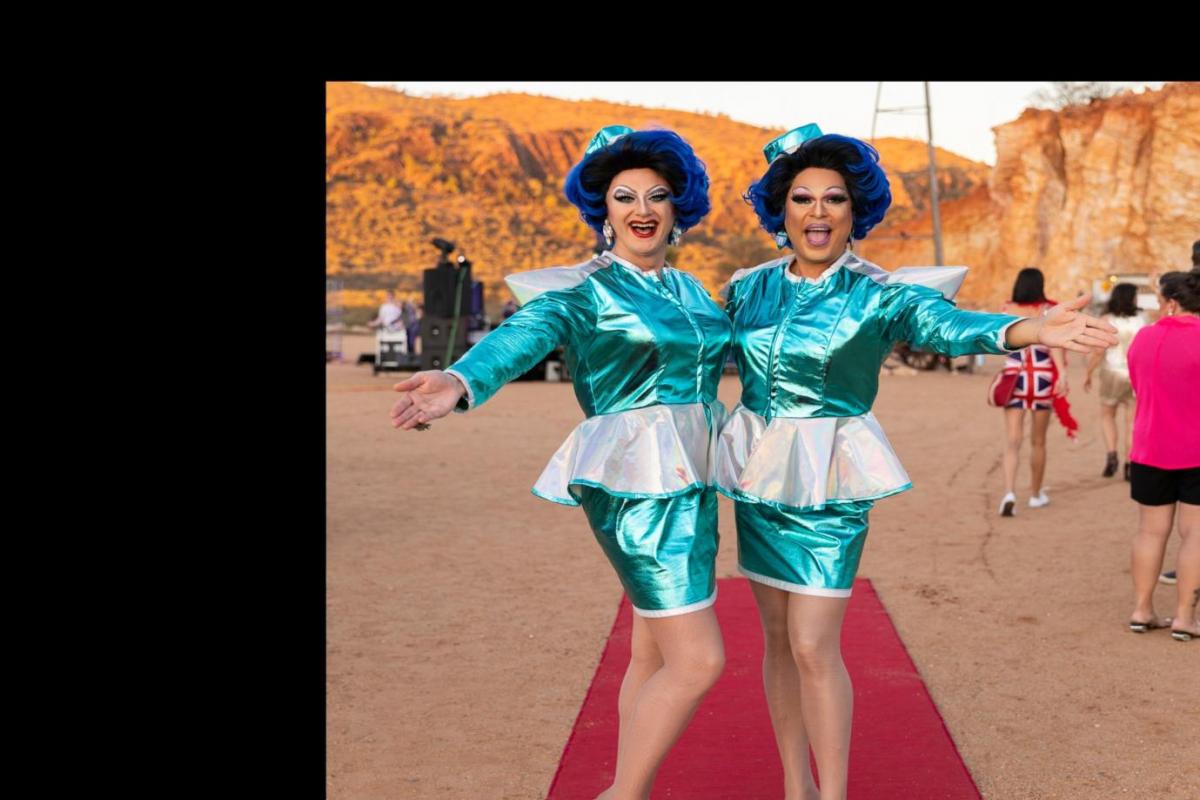
Contemporary Cross-Dress
Since the arrival of home television and VCRs in the late 1970s, self-entertainment has generally declined in the Territory. Fancy Dress is no longer a frequent past-time for Territory residents but our traditions of transgression have both survived and evolved. As awareness of different gender identities and sexual orientations has grown, cross-dressing has both acquired new meanings and associations, and lost old ones. Using one’s appearance to reflect one’s full identity has become more normalised and understood.
Cross-dressing and drag in the Territory live on. These days, Alice Springs is home to 'FABalice', a three-day drag festival, while Darwin’s 'frock parties' are a riot of tropical colour and ill-considered fashion.
- DownloadsFurther reading (412.89 KB)

